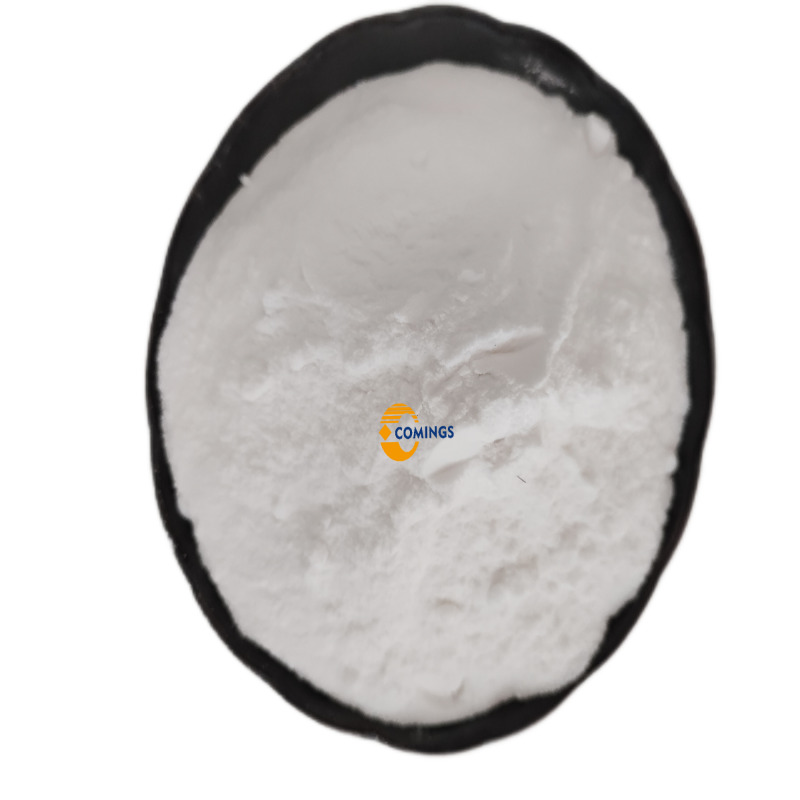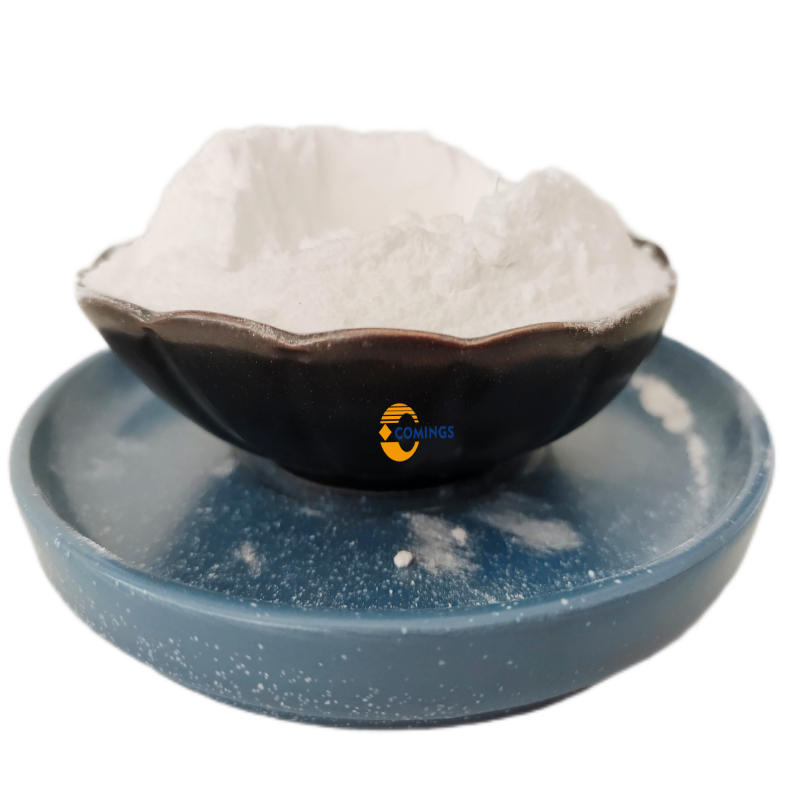-
Categories
-
Pharmaceutical Intermediates
-
Active Pharmaceutical Ingredients
-
Food Additives
- Industrial Coatings
- Agrochemicals
- Dyes and Pigments
- Surfactant
- Flavors and Fragrances
- Chemical Reagents
- Catalyst and Auxiliary
- Natural Products
- Inorganic Chemistry
-
Organic Chemistry
-
Biochemical Engineering
- Analytical Chemistry
-
Cosmetic Ingredient
- Water Treatment Chemical
-
Pharmaceutical Intermediates
Promotion
ECHEMI Mall
Wholesale
Weekly Price
Exhibition
News
-
Trade Service
Compared with SARS-CoV2, the pathogen that causes COVID-19, the development of an effective vaccine against the HIV virus that causes AIDS is still far away
.
Prior to the development of effective HIV vaccines, an in-depth understanding of HIV replication mechanisms and virus-host interactions at the molecular level is currently the main way to advance the diagnosis and treatment of HIV infection and AIDS
.
Similar to the SARS-CoV2 virus, the HIV genome is also composed of single-stranded RNA
.
The difference is that SARS-CoV2 is a positive-stranded RNA virus, and its genome is directly used as a translation template to encode viral proteins; HIV is a retrovirus, whose RNA genome must first be reverse transcribed into double-stranded DNA, and then integrated into the host chromosome after entering the nucleus Then, the host's RNA polymerase II realizes transcription and splicing, and then is transported to the cytoplasm for translation.
Finally, the Gag protein carries the new RNA genome and locates it to the plasma membrane region to initiate the assembly of the next generation of virus particles
.
Gag (p55) is the main structural protein of HIV, including four main structural domains: matrix (MA), capsid (capsid, CA), nucleocapsid (NC) and p6
.
Among them, the N-terminal matrix protein is responsible for the cell membrane positioning of Gag and leads the assembly of new virus particles
.
The membrane positioning function of the matrix mainly relies on a highly basic region (Highly Basic Region, HBR) on the surface of the protein and the hydrophobic myristate modification at the nearby N-terminal to jointly complete the membrane positioning of Gag
.
In the late stage of HIV infection, the intracellular concentration of Gag protein produced by the translation of viral mRNA continues to increase, gradually causing the formation of Gag multimers, causing the myristic acid that was originally hidden in the matrix protein at the N-terminus of the matrix to be exposed on the surface of the protein.
Near the positively charged area, Gag is located in the inner lobes of the cell plasma membrane, and new virus particles are assembled [1]
.
In order to realize the assembly of the RNA genome of the next generation virus, HIV mainly relies on the recognition and binding of the nucleocapsid protein region of Gag to the RNA genome of HIV
.
In addition to the nucleocapsid, recent studies have shown that the N-terminal matrix protein is also an RNA binding protein
.
However, whether the matrix protein has the specificity of binding or recognizing RNA has been unclear
.
In 2014, the Paul Bieniasz research group of the Rockefeller University found that the matrix protein in HIV-infected cells was mainly cross-linked with the host's tRNA through ChIP-Seq analysis [2]
.
However, how Gag specifically binds to tRNA, whether the binding is specific, and the biological significance of the Gag-tRNA interaction has been unclear [3]
.
On August 11, 2021, the US National Institutes of Health (NIH) researcher Zhang Jinwei's research group (https://www-mslmb.
niddk.
nih.
gov/zhang/zhanglab.
html) and the Rockefeller University Paul Bieniasz research group at Cell Host & Microbe jointly published an article HIV-1 Matrix-tRNA complex structure reveals basis for host control of Gag localization, which analyzed the first co-crystal structure of HIV matrix protein and host tRNA, and revealed for the first time the molecular basis of Gag protein-specific identification of tRNA , And through a variety of biophysical methods such as isothermal titration calorimetry, fluorescence spectroscopy, ultracentrifugation, nuclear magnetic resonance, etc.
, revealed the specificity of matrix protein binding to RNA
.
The researchers also used virological analysis, intracellular cross-linking immunoprecipitation, live cell imaging analysis and other methods to find that Gag protein, which lacks the ability to bind tRNA, is prematurely localized to the plasma membrane, causing HIV replication defects in various cell lines.
.
Therefore, HIV realizes the regulation of the membrane positioning of its main structural proteins by manipulating the host tRNA, and thereby delays and optimizes the assembly of virus particles to achieve efficient and controllable virus replication
.
a.
After wild-type HIV-1 infects cells, WT Gag uses host-bound tRNA to temporarily block Gag from directing to the plasma membrane to delay the assembly of HIV-1 virus particles, waiting for viral protein translation, genome assembly, removal of antiviral proteins, etc.
The completion of the steps
.
b.
Gag carrying a single mutant of the matrix protein cannot bind to tRNA, resulting in the advancement of plasma membrane localization and particle assembly of Gag, resulting in some non-infectious viruses and reducing the overall replication efficiency
.
For decades, many research groups have noticed that the HIV matrix can bind to nucleic acids in cells
.
However, before this work, most researchers believed that the combination of tRNA and substrate was driven by the matching of positive and negative charges, and did not have any specificity and selectivity
.
Because tRNA molecules carry a large amount of negative electricity and can naturally bind to the positively charged area (HBR) of the matrix, other RNAs can also bind to the matrix
.
This work revealed and proved for the first time that the HIV matrix has a clear and significant specificity to the structure of tRNA, and the binding only depends on the 3 positively charged residues (R22, K27) in the densely charged region (about 16 residues in total).
, K32) and an aromatic residue (W36)
.
The matrix-tRNA complex structure reveals that HIV has gradually evolved the ability to specifically bind to the host's tRNA elbow structure through long-term contact with the host and natural selection in the matrix region of the N-terminal of Gag
.
The elbow structure of tRNA is produced by the complementary mosaic of D-loop and T-loop structures, which is a unique surface structure feature of tRNA
.
This structure is also one of the main sites for aminoacyl-tRNA synthetase (aaRS), ribosomes, RNase P, and T-box riboswitches to recognize tRNA [4-9]
.
Gag proteins carrying K32A or W36A point mutations cannot bind tRNA, causing Gag proteins to prematurely localize to the cytoplasmic membrane and cause significant replication defects
.
a
.
Co-crystal structure of HIV matrix protein and host tRNA .
b.
The HIV matrix mainly relies on 4 residues (red) to specifically identify the elbow structure of the tRNA
.
c.
Wild-type Gag is distributed in the plasma membrane and cytoplasm in a balanced manner; Gag that binds tRNA defects is almost completely localized to the plasma membrane
.
d.
Gag mutations that cannot bind tRNA cause significant HIV-1 virus replication defects
.
Overall, this study found that HIV-1 not only uses host tRNA as a necessary primer for reverse transcription of the viral genome, but also manipulates tRNA to achieve temporal and spatial regulation of viral particle assembly and replication
.
This newly discovered HIV matrix-tRNA elbow virus-host interface helps to develop a new generation of anti-HIV small molecules or RNA drugs
.
This research work was mainly done by Charles Bou-Nader, a postdoctoral fellow in the laboratory of NIH Zhang Jinwei and Frauke Muecksch, a postdoctoral fellow in the Paul Bieniasz laboratory of Rockefeller University
.
Researcher Zhang Jinwei and Professor Paul Bieniasz are the co-corresponding authors, and are supported by the laboratory of Professor Michael Summers of the University of Maryland
.
Recruitment of the research group and introduction of researcher Zhang Jinwei: The research group of Zhang Jinwei (https://www-mslmb.
niddk.
nih.
gov/zhang/zhanglab.
html) has long been committed to the frontier research of complex non-coding ribonucleic acid in structural biology, mainly developing and Use RNA design and transformation, RNA crystallography, cryo-electron microscopy, X-ray free electron laser, single-molecule fluorescence and fluorescence lifetime and many other biophysical and biochemical technologies
.
Researcher Zhang Jinwei graduated from the School of Life Sciences at Peking University and received his Ph.
D.
from the University of Wisconsin.
The laboratory is located in the Molecular Biology Laboratory on the main campus of the National Institutes of Health
.
The main research work published in Nature, Cell, Nat Struct & Mol Biol, Mol Cell, Cell Host & Microbe, Nat Commun and other well-known international journals
.
The research group has long invited young scholars interested in RNA structural biology and biophysics to join the team or discuss topics
.
For details, please see: NIH Zhang Jinwei Group of the National Institutes of Health is looking for postdoctoral research in RNA structural biology (long-term effective).
Recent BioArt report NSMB | Zhang Jinwei/Zhao Hua's group jointly reveal the core mechanism of T-box nucleic acid switch NSMB | Zhang Jinwei's group clarifies T- The box nucleic acid switch recognizes the structural mechanism of tRNA and regulates protein synthesis.
Original link: https://doi.
org/10.
1016/j.
chom.
2021.
07.
006 Platemaker: Eleven References 1.
Tang, C.
; Loeliger, E.
; Luncsford, P.
; Kinde, I.
; Beckett, D.
; Summers, MF, Entropic switch regulates myristate exposure in the HIV-1 matrix protein.
Proc Natl Acad Sci USA 2004, 101, (2), 517-22.
2.
Kutluay, SB; Zang, T.
; Blanco-Melo, D.
; Powell, C.
; Jannain, D.
; Errando, M.
; Bieniasz, PD, Global changes in the RNA binding specificity of HIV-1 gag regulate virion genesis .
Cell 2014, 159, (5), 1096-1109.
3.
Todd, GC; Duchon, A.
; Inlora, J.
; Olson, ED; Musier-Forsyth, K.
; Ono, A.
, Inhibition of HIV-1 Gag -membrane interactions by specific RNAs.
RNA 2017, 23, (3), 395-405.
4.
Suddala, KC; Zhang, J.
,High-affinity recognition of specific tRNAs by an mRNA anticodon-binding groove.
Nat Struct Mol Biol 2019, 26, (12), 1114-1122.
5.
Li, S.
; Su, Z.
; Lehmann, J.
; Stamatopoulou, V.
; Giarimoglou, N.
; Henderson, FE; Fan, L.
; Pintilie, GD; Zhang, K.
; Chen, M.
; Ludtke, SJ; Wang, YX; Stathopoulos, C.
; Chiu, W.
; Zhang, J .
, Structural basis of amino acid surveillance by higher-order tRNA-mRNA interactions.
Nat Struct Mol Biol 2019, 26, (12), 1094-1105.
6.
Reiter, NJ; Osterman, A.
; Torres-Larios, A.
; Swinger , KK; Pan, T.
; Mondragon, A.
, Structure of a bacterial ribonuclease P holoenzyme in complex with tRNA.
Nature 2010, 468, (7325), 784-9.
7.
Zhang, J.
; Ferré-D'Amaré, AR , The tRNA Elbow in Structure, Recognition and Evolution.
eLife (Basel) 2016, 6, (1).
8.
Wu, J.
; Niu, S.
; Tan, M.
; Huang, C.
; Li, M.
; Song, Y.
; Wang, Q.
; Chen, J.
; Shi,S.
; Lan, P.
; Lei, M.
, Cryo-EM Structure of the Human Ribonuclease P Holoenzyme.
Cell 2018, 175, (5), 1393-1404 e11.
9.
Zhang, J.
, Unboxing the T-box riboswitches-A glimpse into multivalent and multimodal RNA-RNA interactions.
Wiley Interdiscip Rev RNA 2020, 11, (6), e1600.
Instructions for reprinting [Non-original article] The copyright of this article belongs to the author of the article, personal forwarding and sharing are welcome, and it is prohibited without permission Reprinted, the author has all legal rights, offenders must be investigated
.






